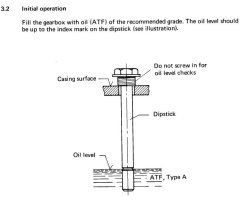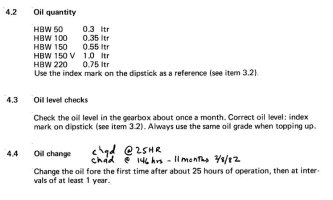Neil Gallagher
1984 E381
Hello fellow Ericson Sailers, I have a question regarding the Hurth HBW100 transmission maintenance. I have had a few occasions where my engine does not intiatially shift into reverse. Which is a little disconcerting while approaching the dock! It does shift into reverse after a few attempts. I've have changed out the fluid and when looking up the details in the manuals I see the ATF capacity of a HBW100 as .55 liters (1.3pts). After adding .5 liters of ATF and checking the dip stick it reads considerably higher than the line on the tip of the stick. I've seen documentation that stated check the level by placing the dip stick in the fill hole "without" screwing the dip stick into the transmission. So the confusion is whch is the correct amount of ATF to add, the service manual capacity or the dip stick? I've always used the dip stick as the guage which is much less than .55 liters. Now I'm wondering if I have been running with low ATF for many years. The engine has 1670 hours and the transmisson is original as far as I know. I also checked the shifting cable and it appears to be extending and retracting correctly, ie the full distance. I have found some metal shavings in the fluid in the past during fluid changes. Thanks in advance.


